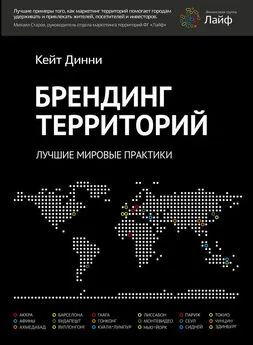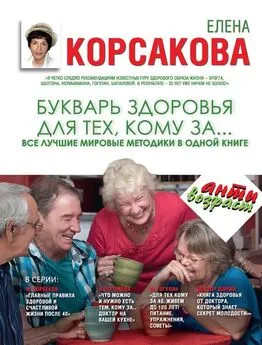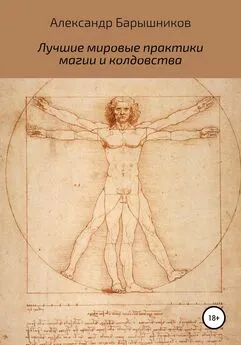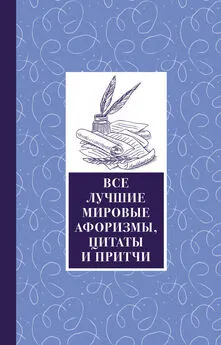Кейт Динни - Брендинг территорий. Лучшие мировые практики
- Название:Брендинг территорий. Лучшие мировые практики
- Автор:
- Жанр:
- Издательство:Манн Иванов Фербер
- Год:2013
- Город:Москва
- ISBN:978-5-91657-655-9
- Рейтинг:
- Избранное:Добавить в избранное
-
Отзывы:
-
Ваша оценка:
Кейт Динни - Брендинг территорий. Лучшие мировые практики краткое содержание
Брендинг территорий. Лучшие мировые практики - читать онлайн бесплатно полную версию (весь текст целиком)
Интервал:
Закладка:
209. Peel, D. and Lloyd, G. (2008), New communicative challenges: Dundee, place branding and the reconstruction of a city image, Town Planning Review, Vol. 79, No. 5, pp. 507–532.
210. Pesek, W. (2006), Our future up in the air, The Standard, 8 December; available at: http://www.thestandard.com.hk/news_detail.asp?pp_cat=15&art_id=33647&sid=11224813&con_type=1&d_str=20061208&sear_year=2006(accessed 20 May 2010).
211. Peterson, R.A. and Jolibert, A.J.R. (1995), A meta-analysis of country-of-origin effects, Journal of International Business Studies, V ol. 26, No. 4, pp. 883–900.
212. Pine, J. and Gilmore, J. (1999), The Experience Economy: Work is Theatre & Every Business a Stage, Harvard Business School Press, Boston, United States.
213. Prashanth, B. (2009), Ahmedabad: The city of the future, The Times of India, Ahmedabad edition, 10 October; Special Supplement, p. 1.
214. Prentice, R. and Andersen, V. (2007), Interpreting heritage essentialisms: Familiarity and felt history, Tourism Management, Vol. 28, No. 3, pp. 661–676.
215. Promoting Edinburgh as a destination: Investigating the future promotion of Edinburgh as a place to live, invest and visit. February 2008, The Communication Group. Available at: http://www.edinburgh.gov.uk/internet/Attachments/lntemet/Business/Economic_development/Promoting_Edinburgh_as_a_Destination.pdf(accessed 12 February 2010).
216. Puczko, L., Ratz, T. and Smith, M. (2007), Old city, new image: Perception, positioning and promotion of Budapest, Journal of Travel and Tourism Marketing, Vol. 22, No. 3, pp. 21–34.
217. Puntigam, M., Braiterman, J. and Suzuki, M. (2010), Biodiversity and new urbanism in Tokyo: The role of the Kanda River, paper presented at the International Federation of Landscape Architects 47 thWorld Congress, 28–30 May, Suzhou, China.
218. Reader, I. (2004), Cities, Atlantic Monthly Press, New York, United States.
219. Richards, B. (1992), How to Market Tourist Attractions, Festivals, and Special Events, Longman, Essex.
220. Robertson, S. (2008), Malaysia education: Strategic branding leads to growth in international student numbers 2006-8, GlobalHigherEd, available at: http://globalhighered.wordpress.com/2008/03/16/malaysias-international-student-numbers-increase-by-30-between-2006-8/(accessed 27 January 2010).
221. Rowley, J. (2004), Online branding, Online Information Review, Vol. 28, No. 2, pp. 131–138.
222. Russell, D., Mort, G.S. and Hume, M. (2009), Analysis of management narrative to understand social marketing strategy: The case of Branding Logan City . Australasian Marketing Journal, Vol. 17, No. 4, pp. 232–237.
223. Saffron Brand Consultants (2008), The City Brand Barometer 2008, www.saffron-consultants.com
224. Salomonsson, A. (1984), Some thoughts on the concept of revitalization, Ethnologia Scandinavica, Vol. 1, pp. 34–47.
225. Sauer A. (2006), Las Vegas cashes in, Brandchannel, available at: http://www.brandchannel.com/features_profile.asp?pr_id=292(accessed 10 July 2009).
226. Scott, A.J. (2006), Creative cities: Conceptual issues and policy questions, Journal of Urban Aprs, Vol. 28, No. 1, pp. 1–17.
227. Selby, M. (2004), Understanding Urban Tourism: Image, Culture and Experience, I. B. Taurus & Co., London, United Kingdom.
228. Seno, A. (2009), Art wars: Hong Kong vs Singapore, Wall Street Journal [online], 30 October; available at: http://online.wsj.com/article/S125678376301415081.html(accessed 24 November).
229. Sesser, S. (2006), The cheapest city on earth, The Wall Street Journal [online], 21 October; available at: http://online.wsj.com/article/SBI16137824861399313.html (accessed 21 January).
230. Shah, R. (2008), Nano will be made in Ahmedabad, Sunday Times, Ahmedabad edition, 5 October, p. I.
231. Shah, R. and Shukla, N. (2009), Liquidity flows into ‘dry’ Gujarat, The Times of India, Ahmedabad edition, 12 January, p. I.
232. Sharp, L. (2001), Positive response action: The ultimate goal of website communication, Journal of Communication Management, Vol. 6, No. 1, pp. 41–52.
233. Sheth, J. and Sisodia, R. (2005), A dangerous divergence: Marketing and society, Journal of Public Policy and Marketing, Vol. 24, No. 1, pp. 160–162.
234. Skinner, H. (2005), Wish you were here? Some problems associated with integrating marketing communications when promoting place brands, Place Branding, Vol. 1, No. 3, pp. 299–315.
235. Smith, A. (2005), Conceptualizing city image change: The ‘re-imaging’ of Barcelona, Tourism Geographies, Vol. 7, No. 4, pp. 398–423.
236. Smith, M.F. (2004), Brand Philadelphia: The power of spotlight events, in Morgan, N., Pritchard. A. and Pride, R. (eds), Destination Branding: Creating the Unique Destination Proposition, Second edition, Butterworth-Heinemann, Oxford, United Kingdom, pp. 261–278.
237. Sterne, J. (1999), World Wide Web Marketing, Second edition, Wiley, New York, United States.
238. Svenska Livsmedel (2009), Det nya matlandet: Att gora naringspolitik av gastronomi (In English: The new food land: Making economic policies of gastronomy), Svenska Livsmedel, No. 6, pp. 20–22.
239. Sya, L.S. (2005), Branding Malaysia, Oak Enterprise, Petaling Jaya, Malaysia.
240. Tatevossian, A.R. (2008), Domestic society’s (often-neglected) role in nation branding, Place Branding and Public Diplomacy, Vol. 4, No. 2, pp. 182–190.
241. Tellstrom, R., Gustafsson, I.B. and Mossberg, L. (2005), Local food cultures in the Swedish rural economy, Sociologia Ruralis, Vol. 45, No. 4, pp. 346–360.
242. Tellstrom, R., Gustafsson, I.B. and Mossberg, L. (2006), Origin as brand: Converting anonymous food products into symbols of place using regional food cultural heritage, Place Branding, Vol. 2, No. 2, pp. 130–143.
243. Temporal, R. (2001), Branding in Asia, John Wiley and Sons, Singapore.
244. The Economist (2008), The rivals – London and Paris, 15 March, p. 35.
245. The Globe and Mail (1987), Peter Ustinov Interview with John Bentley Mays, I August 1987.
246. The Governor’s Residence Cookery Book – Food from the West for Everyday and Festive Meals (1999). In Swedish: Residensets kokbok: Mat frin vast till vardag och fest., Nordbok International, Gothenburg, Sweden.
247. The Star Online (2008), Highlights of Budget 2009, 29 August, available at: http://thestarcom.my/news/story.asp?file=/2008/8/29/budget2009/20080829161149&sec=budget2009(accessed I I January 2010).
248. The Times of India (2009), Apco to market Vibrant Guj, Ahmedabad edition, 15 October, p. I.
249. The Times of India (2010a), One more feather in the cap for city BRTS, 29 May, p. 2.
250. The Times of India (2010b), At 50, ready to rival Mumbai, Ahmedabad edition, I May, p, I.
251. Therkelsen, A. and Halkier, H. (2008), Contemplating place branding umbrellas. The case of coordinated national tourism and business promotion in Denmark, Scandinavian Journal of Hospitality and Tourism, Vol. 8, No. 2, pp. 159–175.
252. Thetourismcompany.com (2009), Twitter and its use by tourism destinations, available at: http://www.thetourismcompany.com/topic.asp?topicid=21(accessed 12 January 2010).
253. Tourismireland.com (2007), Tourism Ireland launches the world’s first tourism marketing drive in ‘Second Life’, available at: http://www.tourismireland.com/Horne/about-us/press-releases/2007/Tourism-lreland-Launches-the-World%E2%80%99s-First-Tourism.aspx(accessed 6 January 2010).
254. Travolution.co.uk (2009), Case study – WAYN-Joburg tourism, available at: http://www.travolution.co.uk/articles/2009/02/23/2258/case-study-wayn-joburg-tourism.html(accessed 5 January 2010).
255. Tregear, A. (1998), Artisan producers in the UK food system: Attributes and implications, paper presented at the Agricultural Economics Society Annual Conference, University of Reading, 26 March 1998.
256. Tregear, A. (2003), From Stilton to Vimto: Using food history to re-think typical products in rural development, Sociologia Ruralis, Vol. 43, No. 2, pp. 91–108.
257. Trubek, A. (2008), The Taste of a Place: A Cultural Journey into Terror, University of California Press, Berkeley, United States.
258. Trueman, M., Cook, D. and Cornelius, N. (2008), Creative dimensions for branding and regeneration: Overcoming negative perceptions of a city, Place Branding and Public Diplomacy, Vol. 4, No. 1, pp. 29–44.
259. Trueman, M., Klemm, M. and Giroud, A. (2004), Can a city communicate? Bradford as a corporate brand, Corporate Communications: An International Journal, Vol. 9, No. 4, pp. 317–330.
260. United Nations (2005), World Urbanization Prospects: The 2005 Revision, Population Division, Department of Economic and Social Affairs, United Nations, available at: http://www.un.org/esa/population/publications/WUP2005/2005wup.htm
261. United Nations Population Fund (2007), State of World Population 2007: Unleashing the Potential of Urban Growth, available at: http://www.unfpa.org/swp/2007/english/introduction.html(accessed 15 May 2010).
262. Urry, J. (1990), The Tourist Gaze: Leisure and Travel in Contemporary Societies, Sage, London, United Kingdom.
263. Urry, J. (1995), Consuming Places, Routledge, London, United Kingdom.
264. Urry, J. (2002 [1990]), The Tourist Gaze: Leisure and Travel in Contemporary Societies, Second edition, Sage Publications, London, United Kingdom.
265. Valerio, R., Baker B. and Gulloch, G. (1999), Wollongong Image Strategy, Report to Wollongong City Council, Wollongong, Australia.
266. Vallaster, C. and de Chernatony, L. (2006), Internal brand building and structuration: The role of leadership, European Journal of Marketing, Vol. 40, No. 7/8, pp. 761–784.
267. van Gelder, S. (2008), An introduction to city branding, available at: www.placebrands.net/files/An_lntroduction_to_City_Branding.pdf(accessed 20 January 2010).
268. Vanolo, A. (2008), Internationalization in the Helsinki metropolitan area: Images, discourses and metaphors, European Planning Studies, Vol. 16, No. 2, pp. 229–252.
269. Vastu-Shilpa Foundation (2002), The Ahmedabad Chronicle: Imprints of a Millennium, Vastu Shilpa Foundation for Studies and Research in Environmental Design, Ahmedabad, India.
270. Vasudevan, S. (2008), The role of internal stakeholders in destination branding: Observations from Kerala tourism, Place Branding and Public Diplomacy, Vol. 4, No. 4, pp. 331–335.
271. Verlegh, R.W.J. and Steenkamp, J-B.E.M. (1999), A review and meta-analysis of country-of-origin research, Journal of Economic Psychology, Vol. 20, No. 5, pp. 521–546.
272. Visit Aarhus (2010), Frontpage, available at: http://www.visitaarhus.com/international/en-gb/menu/turist/turist-maalgruppe-forside.htm(accessed 5 February 2010).
273. Waller, J. and Lea, S.E.G. (1999), Seeking the real Spain? Authenticity in Motivation, Annals of Tourism Research , Vol. 26, No. I, pp. 110–129.
274. Watson, S. (1991), Gilding the smokestacks: The new symbolic representations of de-industrialised regions, Environment and Planning D: Society and Space, Vol. 9, No. I, pp. 59–70.
275. Weisman, A. (2007), The World Without Us, St Martin Press, New York, United States.
Читать дальшеИнтервал:
Закладка:










